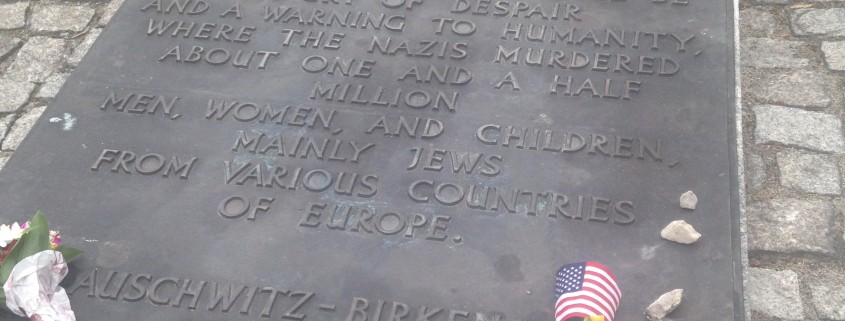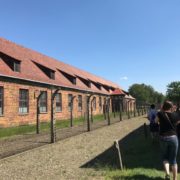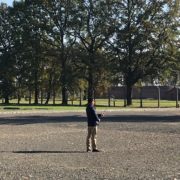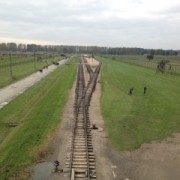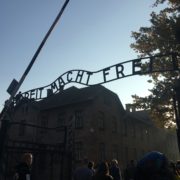Appalling Auschwitz: Confronting the Past
By Katie Thomas
Recently, we have been discussing the differences between memory and history as two distinctly different concepts. Memory holds personal meaning, whereas history is focused in academia and studies. One way to think of these phenomena is memory is discussing the past through personal experiences around a fire, whereas history is read about. However, I have come to realize that with contemporary history, the two seem to blend together. So far, there has not been a place where this is more prominent as it was at Auschwitz and Birkenau.
As we followed our tour guide throughout the two camps, it was absolutely mind-boggling that we stood where people could have been shot or died due to lack of proper care. The memories of these people really came to life when we stepped inside Block 27. This building is home to a permanent exhibit, from Yad Vashem, the Israeli institution which documents and commemorates the Holocaust. When you step inside, you hear the haunting voices of someone singing a Jewish prayer. As we continued onwards, we watched videos of Jewish life from before the war in multiple different countries; all of these people were targeted by the Nazis. We watched glimpses of their lives; these were actual moments and memories that, should they have survived, they would have been able to look back on and smile about. They were not seconds that were meant to be in a history book; they were seconds that showcased normal families living their daily lives. Further in Block 27, we came upon drawings done by children before their presumed demises. They showcased images such as life before and during the camp, among others. It was awe-inspiring looking into the minds of the innocent and looking at life in the camp through their eyes.
Memories of all the Jews come to life when you look at the monument at Birkenau. At the bottom there are plaques stating the purpose of the memorial, replicated in all languages spoken by those murdered in Auschwitz and Birkenau. While it honors history by acknowledging the tragic events in the camp occurred, I would argue that the memories are more prominent here, because even though the monument is not specifically designated to any one person, it is situated between two of the gas chambers and crematories, so it acts as a symbolic gravestone for all those who met their end in Auschwitz and Birkenau.

Models of the gas chambers and crematories. The gas chambers were underground, while the crematories were aboveground.1

Models of the gas chambers and crematories. The gas chambers were underground, while the crematories were aboveground.2

